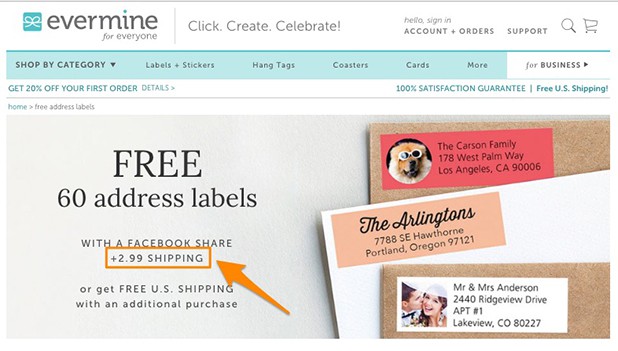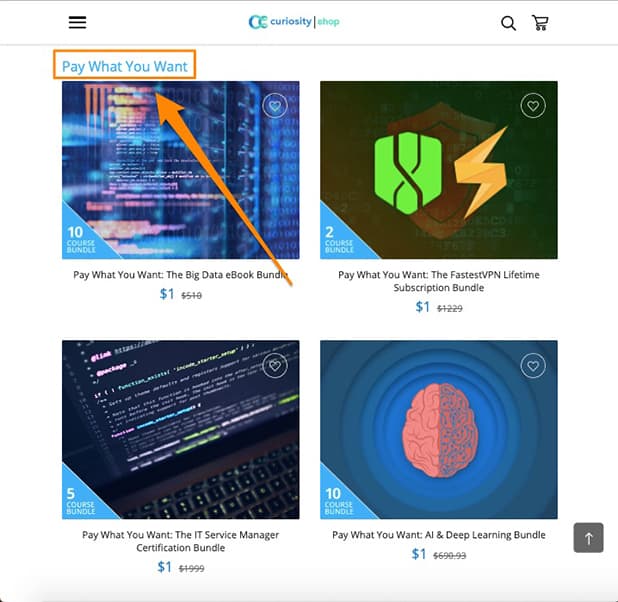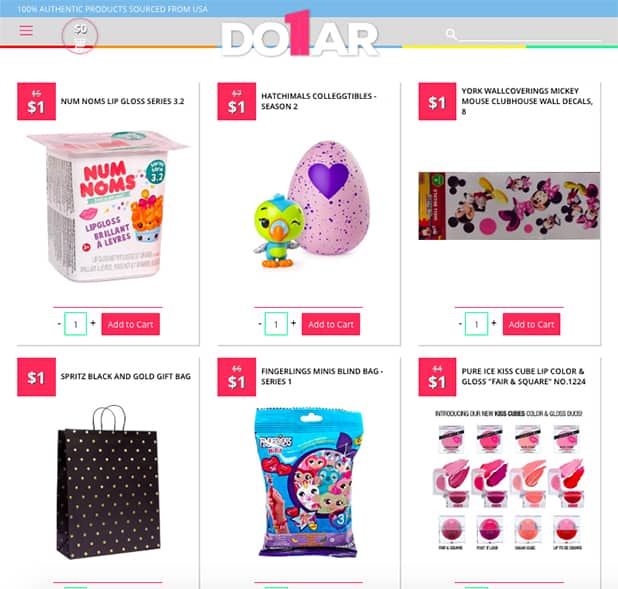Many people love to tell you how their business succeeded with a particular pricing/marketing/advertising strategy. I’m not saying that you can’t learn lessons from other businesses’ success stories, but the question is, can you benefit from following their advice? You can or should test whether their tactics work for your company. But if they don’t, there is no point in insisting on them.
Only some businesses can benefit from the common strategies that work well for most companies. Your business may have unique characteristics and problems that require unique solutions. Unique pricing strategy can do wonders for your business; here, we will learn six rare techniques.
If you’re ready, let’s dive in.
Free Plus Shipping
If an online store doesn’t charge a product fee but asks for the shipping cost, it pursues a free pricing strategy.
Of course, it’s not for all types of e-commerce stores, but there is a rationale behind it.
Some retailers buy extremely cheap from suppliers, say 30 cents for a unit, and profit from the shipping fee. Or, as a part of a dropshipping strategy, a producer can pursue this strategy for low-cost products.

Some stores add the production cost to the shipping fee and make it seem like they don’t charge the price, but dishonesty never brings desirable results. Instead, this uncommon pricing strategy can negatively affects the public opinion on the safety of online shopping.
One thing you must be aware of is that consumers tend to overestimate the correlation between price and quality. Therefore, a free product may lose its value in the eyes of customers.

Pay What You Want Pricing (PWYW)
The pay-what-you-want strategy is a good fit for businesses that trust their product quality and are confident that customers will pay a fair amount. You can question how confident one can be regarding other people’s decisions, but some companies profited from this strategy. Of course, it carries risks.
Let’s say you have niche products/services with a loyal customer base. Rather than setting fixed prices, you can let customers decide what to pay. This strategy may resolve the devaluating effect of a ‘free’ product.
Furthermore, it helps you build a strong trust relationship with customers. However, we can’t assume people will give your products what they deserve, but you can always test it and see what it brings you.

You can also set a threshold price that’ll prevent freeriding. It’s a risk-free version of PWYW.
Name Your Price
Name your price is a type of PWYW model which we explained above. The price is not shown to shoppers to allow them to name their price. Sellers let buyers decide the final price they want to pay for the product they are looking for. Therefore, online shoppers can bid on the product they wish to purchase.
This model has been successful in the travel industry, where airlines, hotels, and travel dates are available for the named price. This method is rare and is a differentiator for the businesses applying it. It uses pricing to attract attention and stand out from other sellers in the market.

Prestige (Premium) Pricing
Prestige pricing is one of the uncommon pricing strategies for e-commerce businesses that primarily compete on price. It’s a pricing strategy where a product’s price is set intentionally at a value higher than the average market value. A company can use a prestige pricing strategy to establish its products as high-quality products in the minds of target customers.
Instead of competing on price, some businesses set prices much above the market average and try to create a superior image among competitors. If you’re selling Rolex, the target customers enjoy the exclusiveness of the product, and an expensive price tag contributes to it.

In other cases, new market entrants use premium pricing to cover the costs of starting a business.
Flat Rate Pricing
A flat rate is a pricing strategy involving charging a fixed rate for particular products or services. It’s a straightforward pricing strategy where cost fluctuations or market changes don’t affect the customer.
All of us are familiar with one-dollar stores but not with the e-commerce versions.

This website offers one-dollar bargains for sundries, but you can apply this tactic to more expensive products.
If your product line is homogenous to some extent, flat rate pricing can reduce the time spent on pricing decisions. Service businesses benefit from this particular strategy more than retailers.
Research shows that price consistency is one of the four factors contributing to a price’s fairness. Flat-rate pricing is the most consistent pricing strategy that’ll positively affect consumer perception.
Personalized Pricing
Everyone talks about the importance of big data, but only some use it. There is a reason for it.
Collecting big data is complex, and analyzing it is even more painful. Big players like Amazon invest millions of dollars into big data analysis to develop an in-house dynamic pricing engine that makes 2.5m changes every day.
Big data analysis reveals customers’ willingness to pay, the price point that’ll turn them off, and many other differences in their shopping behavior. Using this data, companies benefit from personalized price offerings that are much more effective than conventional pricing methods.
However, in 2002, Amazon was caught by customers offering different prices to different customers. Customers harshly criticized their policy, and their experience set an example for every SMB. People are becoming more and more sensitive about data privacy. Therefore, personalized pricing could alienate a large number of consumers.
On the other hand, segmenting the target market could drastically improve sales. The solution might be an open pricing policy. Be transparent about your pricing decisions rather than secretly testing prices on different consumer segments. For example, students are financially worse off than working people. They may not afford your products/services, and giving them discounts shouldn’t bother other customers.
A Quick Wrap-up
Conventional pricing strategies can work well for most e-commerce businesses, but you may need something else. Your business may need different solutions to its problems. Rather than insisting on widely used methods, you can try uncommon pricing strategies and see if they work. However, they carry risks that could seriously impair your business. We’ve tried to explain how they could be beneficial, but we also want you to be cautious. Here are the five uncommon pricing strategies:
- Free Plus Shipping
- Pay-What-You-Want
- Prestige Pricing
- Flat-rate Pricing
- Personalized Pricing


